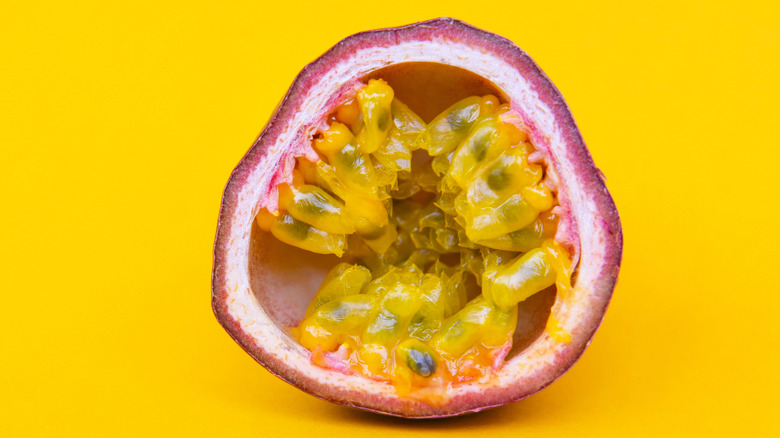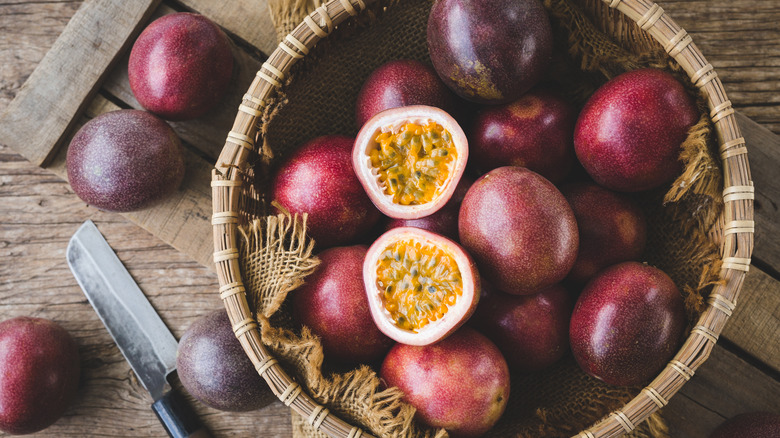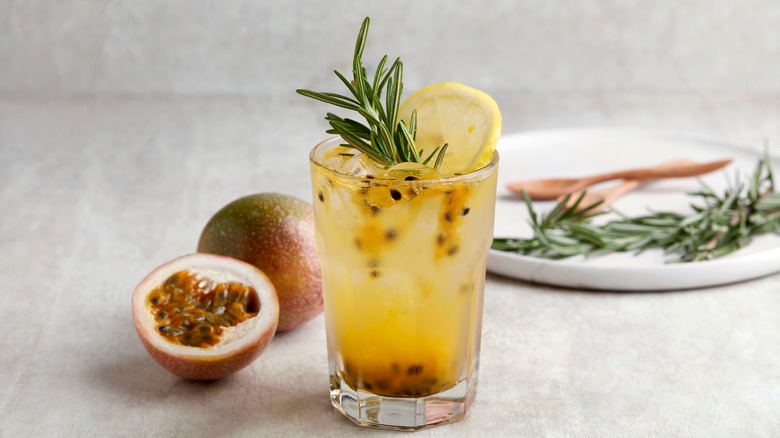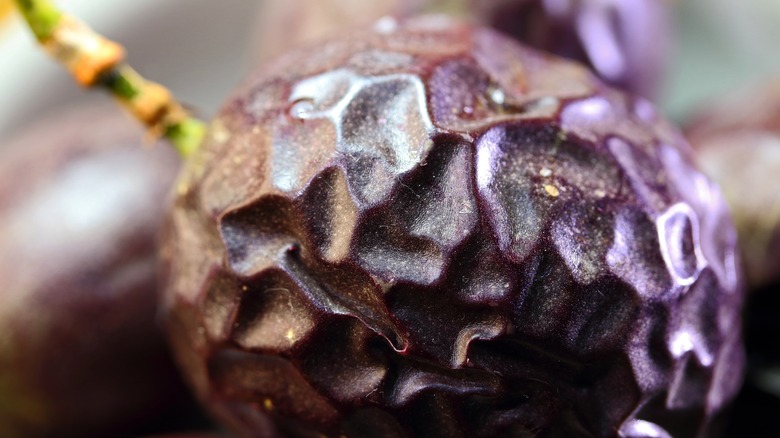This Country Produces The Most Passion Fruit Worldwide
Odds are, if you've regularly watched cooking or baking shows like "The Great British Baking Show," "Cupcake Wars," or even "Iron Chef" within the past decade, you've probably heard about passion fruit.
Passion fruit from the Passiflora vine is known for its tough purple or yellow skin and soft seed-filled innards (via Healthline). And while you wouldn't want to chew through the bitter rind, the flesh is sweet and juicy with a tropical flavor. People use the inner pulp to mix into cocktails, decorate desserts, brighten up salads, or add it to their breakfast for a little fruity pop.
The passion fruit is not always a people pleaser due to its jelly-like texture studded with crunchy seeds — kind of like pomegranate. For that reason, it can trip up picky eaters, so it is a bit risky to use if you don't know your audience's preferences, but if you're an open-minded eater, the passion fruit might be your new favorite.
South American roots
It may come as no surprise to you that with the passion fruit's tropical flavor, the plant prefers to grow in tropical climates. According to Better Homes & Gardens, passion fruit thrives in tropical, temperate climates close to the equator that rarely, if ever, experience frost. With that in mind, it makes sense that the country which produces the most passion fruit is Brazil. The U.S. Library of Congress reports that 90% percent of the South American country is within the tropical zone, making it ideal for mass-producing passion fruit.
Maria Esther Wong, a specialist of the Commercial Intelligence Unit of Sierra y Selva Exportadora, says that Brazil alone produced 593,429 tons of passion fruit in 2020, followed by competitors Colombia and Peru with 137,436 tons and 80,219 tons, respectively. The continent of South America has over 84% of the entire world's passion fruit production (via Blue Book Produce). Though Brazil is by far the biggest producer of the fruit, Peru tops the list as the largest exporter. In 2020, the nation exported $42.2 million worth of passion fruit, whereas Brazil exported only $1.1 million. Blue Book Produce notes that much of Peru's exported passion fruit is shipped to The Netherlands.
How to eat passion fruit
Passion fruit is incredible to have on hand whether you're looking for a fresh daytime snack or an ingredient to jazz up your desserts. Passion fruit is everything you could want from a tropical fruit with its lime-like acidity, honey flavor, and aromatic and floral notes; once you dig into this food, you'll fall head over heels (via Food 52). But besides cutting open the thick skin and scooping out the seed-studded interior to eat raw, what else can you do with it?
According to Masterclass, the two kinds of passion fruit — yellow and purple — differ in more ways than aesthetics. The golden passion fruit can grow to be as large as a grapefruit and has a noticeably tart flavor. The purple passion fruit becomes wrinkly when ripe and is less acidic. Both fruits can be used to make passion fruit puree for bakes, be juiced to use in cocktails, or boiled to make jam. Which type of fruit you choose should depend on your flavor preferences.
How to tell if your passion fruit is good
Purple passion fruit should, despite what your brain might be telling you, should look wrinkly when ripe. If it has smooth skin, you must store it on your countertop until it is nice and dimpled to ensure it is sweet (via Eat By Date). After your passion fruit is ripe, you should refrigerate it in an airtight container, whether it be stored whole or cut, to keep it from over-ripening or rotting. Delighted Cooking says that the fruit can be refrigerated for up to 5 to 7 days.
When inspecting your fruit for purchase, try to buy fruit with rich purple color and wrinkles, but if you find passion fruit with brown skin, avoid it. Pokpoksom advises that brown skin indicates over-ripening or molding; bad odor is another sign to throw out the passion fruit. Your passion fruit should feel heavy when you pick it up. This is a good indication of the quality of the pulp. Delighted Cooking explains that if a passion fruit feels light or hollow, it means that the pulp inside is dried up and spoiled.



